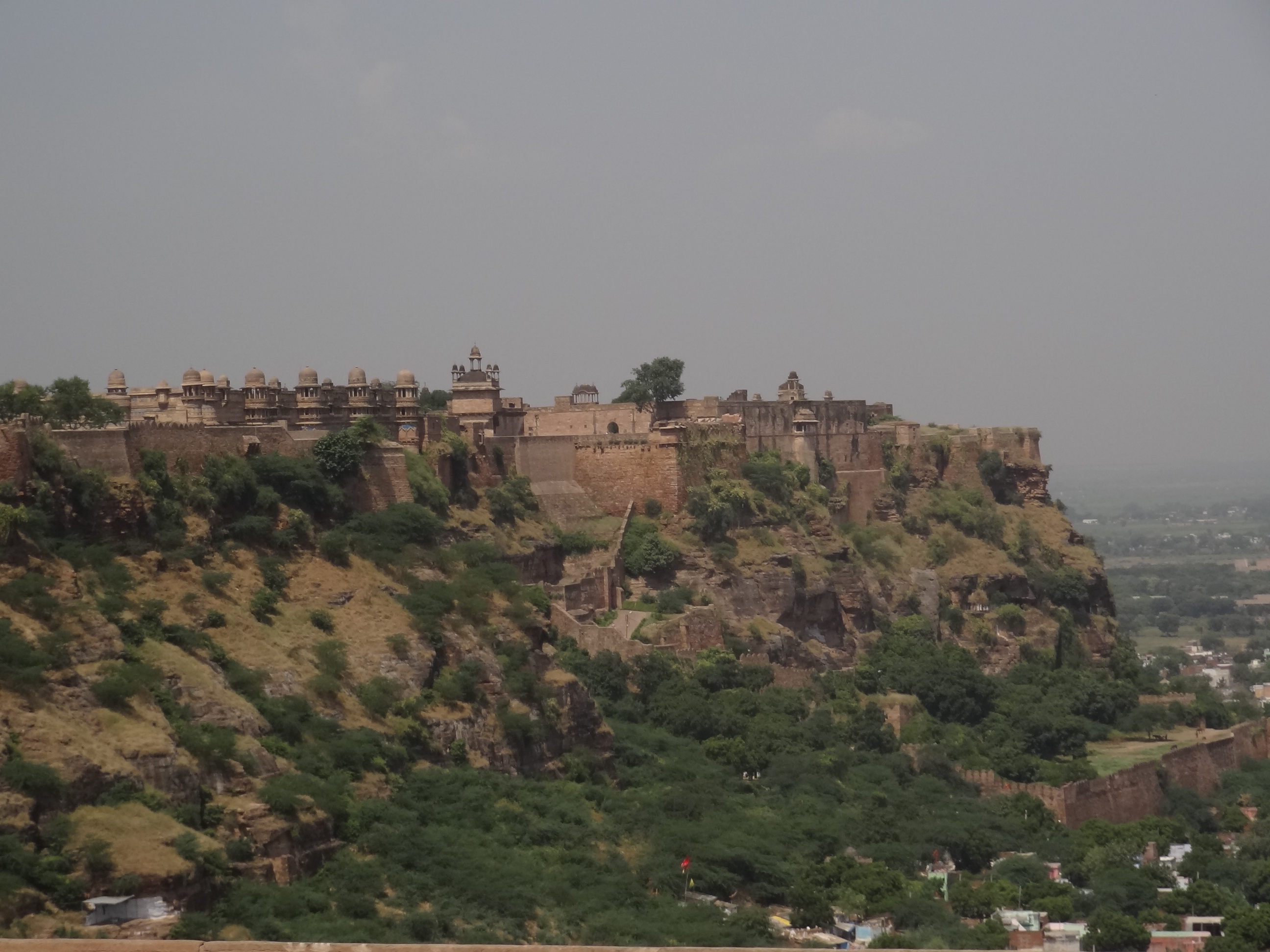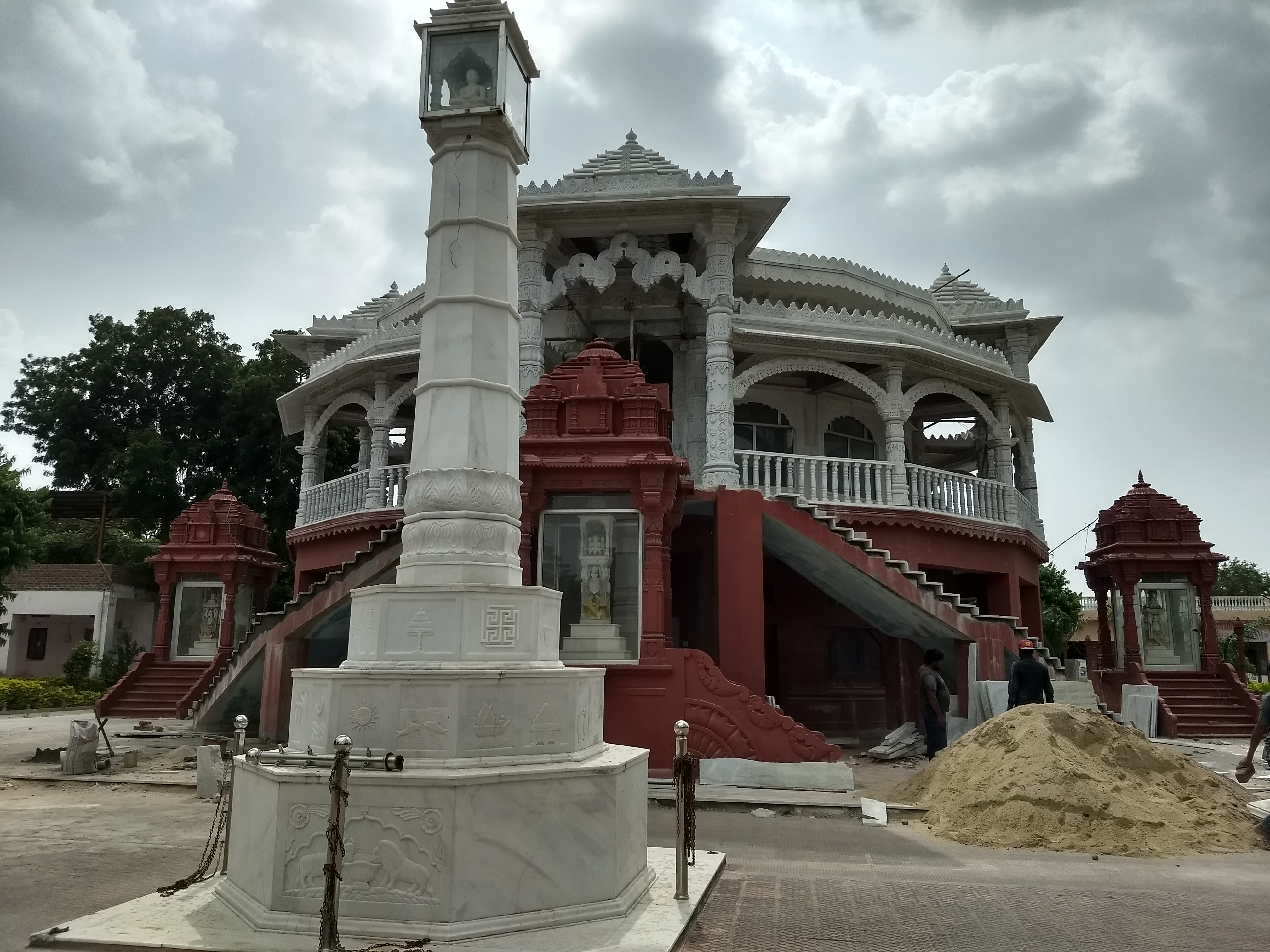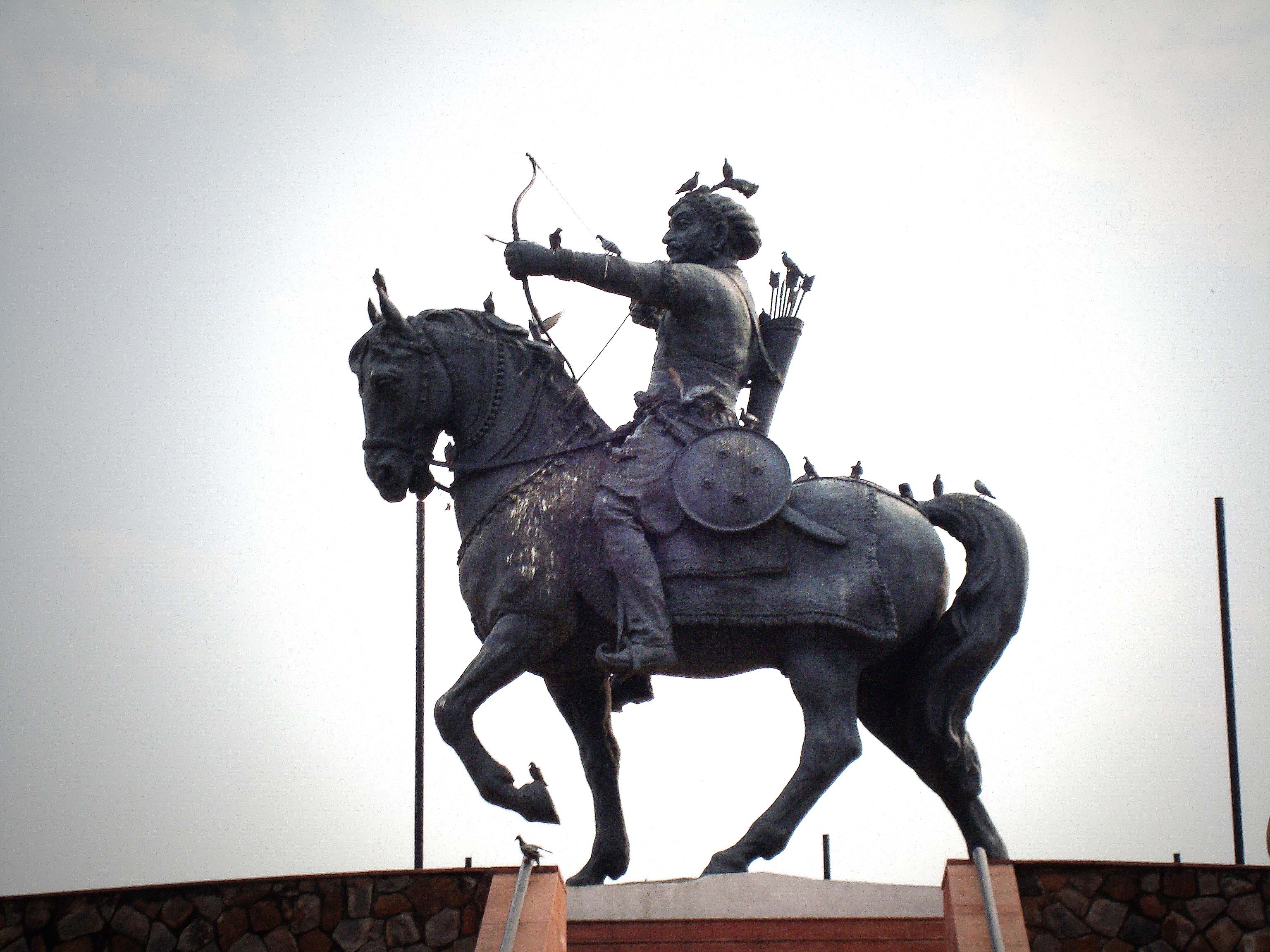|
Tomar Clan
Tomar (also called/spelt Tomara, Tanwar) is a clan, some members of which ruled parts of North India at different times. People belonging to the Tomara clan are found among the Rajputs of Northern India. Most of their population is primarily concentrated in Delhi, Haryana-Torawati and Western UP. There exists 84 villages of Tomars in Western UP alone. Besides,few areas in Northern Madhya Pradesh like Morena, Bhind and Gwalior is referred to as "Tomargarh" meaning "Fort of Tomars" due to quite large population of Tomar Rajputs outside Delhi and its surrounding areas. History The Tomar clan claim descent from Chandravanshi dynasty, naming the ''Mahabharata'' warrior Arjuna among their forebears. The earliest extant historical reference to the Tomaras (the Sanskrit form of "Tomar") occurs in the Pehowa inscription of the Gurjara-Pratihara king Mahendrapala I (r. c. 885-910 CE). This undated inscription suggests that the Tomara chief Gogga was a vassal of Mahendrapala I. Dur ... [...More Info...] [...Related Items...] OR: [Wikipedia] [Google] [Baidu] |
Rajput
Rajput (from Sanskrit ''raja-putra'' 'son of a king') is a large multi-component cluster of castes, kin bodies, and local groups, sharing social status and ideology of genealogical descent originating from the Indian subcontinent. The term Rajput covers various patrilineal clans historically associated with warriorhood: several clans claim Rajput status, although not all claims are universally accepted. According to modern scholars, almost all Rajput clans originated from peasant or pastoral communities. Over time, the Rajputs emerged as a social class comprising people from a variety of ethnic and geographical backgrounds. During the 16th and 17th centuries, the membership of this class became largely hereditary, although new claims to Rajput status continued to be made in the later centuries. Several Rajput-ruled kingdoms played a significant role in many regions of central and northern India from seventh century onwards. The Rajput population and the former Rajput stat ... [...More Info...] [...Related Items...] OR: [Wikipedia] [Google] [Baidu] |
Western Uttar Pradesh
Western Uttar Pradesh is a region in India that comprises the western districts of Uttar Pradesh state, including the areas of Rohilkhand and those where Khariboli, Braj and Kannauji are spoken. The region has some demographic, economic and cultural patterns that are distinct from other parts of Uttar Pradesh, and more closely resemble those of Haryana and Rajasthan states. Western Uttar Pradesh has experienced rapid economic growth, in a fashion similar to Haryana and Punjab, due to the successes of the Green Revolution. Mohamad Riad El-Ghonemy, "The Dynamics of Rural Poverty", Food and Agriculture Organization of the United Nations, 1986. ''... Haryana and West Uttar Pradesh recorded spectacular production increases ...''V. G. Rastyannikov, "Agrarian Evolution in a Multiform Structure Society: Experience of Independent India", Routledge & Kegan Paul, 1981, .B. M. Bhatia, "Food Security in South Asia", Oxford & IHB Pub. Co., 1985. A significant part of western Uttar Pradesh is a ... [...More Info...] [...Related Items...] OR: [Wikipedia] [Google] [Baidu] |
Rajput Clans Of Rajasthan
Rajput (from Sanskrit ''raja-putra'' 'son of a king') is a large multi-component cluster of castes, kin bodies, and local groups, sharing social status and ideology of genealogical descent originating from the Indian subcontinent. The term Rajput covers various patrilineal clans historically associated with warriorhood: several clans claim Rajput status, although not all claims are universally accepted. According to modern scholars, almost all Rajput clans originated from peasant or pastoral communities. Over time, the Rajputs emerged as a social class comprising people from a variety of ethnic and geographical backgrounds. During the 16th and 17th centuries, the membership of this class became largely hereditary, although new claims to Rajput status continued to be made in the later centuries. Several Rajput-ruled kingdoms played a significant role in many regions of central and northern India from seventh century onwards. The Rajput population and the former Rajput states ... [...More Info...] [...Related Items...] OR: [Wikipedia] [Google] [Baidu] |
Rajput Clans Of Delhi
Rajput (from Sanskrit ''raja-putra'' 'son of a king') is a large multi-component cluster of castes, kin bodies, and local groups, sharing social status and ideology of genealogical descent originating from the Indian subcontinent. The term Rajput covers various patrilineal clans historically associated with warriorhood: several clans claim Rajput status, although not all claims are universally accepted. According to modern scholars, almost all Rajput clans originated from peasant or pastoral communities. Over time, the Rajputs emerged as a social class comprising people from a variety of ethnic and geographical backgrounds. During the 16th and 17th centuries, the membership of this class became largely hereditary, although new claims to Rajput status continued to be made in the later centuries. Several Rajput-ruled kingdoms played a significant role in many regions of central and northern India from seventh century onwards. The Rajput population and the former Rajput states ... [...More Info...] [...Related Items...] OR: [Wikipedia] [Google] [Baidu] |
Jat Clans
The Jat people ((), ()) are a traditionally agricultural community in Northern India and Pakistan. Originally pastoralists in the lower Indus river-valley of Sindh, Jats migrated north into the Punjab region in late medieval times, and subsequently into the Delhi Territory, northeastern Rajputana, and the western Gangetic Plain in the 17th and 18th centuries. Quote: "Hiuen Tsang gave the following account of a numerous pastoral-nomadic population in seventh-century Sin-ti (Sind): 'By the side of the river.. f Sind along the flat marshy lowlands for some thousand li, there are several hundreds of thousands very great manyfamilies ..hichgive themselves exclusively to tending cattle and from this derive their livelihood. They have no masters, and whether men or women, have neither rich nor poor.' While they were left unnamed by the Chinese pilgrim, these same people of lower Sind were called Jats' or 'Jats of the wastes' by the Arab geographers. The Jats, as 'dromedary men. ... [...More Info...] [...Related Items...] OR: [Wikipedia] [Google] [Baidu] |
Rajput Rulers
Rajput (from Sanskrit ''raja-putra'' 'son of a king') is a large multi-component cluster of castes, kin bodies, and local groups, sharing social status and ideology of genealogical descent originating from the Indian subcontinent. The term Rajput covers various patrilineal clans historically associated with warriorhood: several clans claim Rajput status, although not all claims are universally accepted. According to modern scholars, almost all Rajput clans originated from peasant or pastoral communities. Over time, the Rajputs emerged as a social class comprising people from a variety of ethnic and geographical backgrounds. During the 16th and 17th centuries, the membership of this class became largely hereditary, although new claims to Rajput status continued to be made in the later centuries. Several Rajput-ruled kingdoms played a significant role in many regions of central and northern India from seventh century onwards. The Rajput population and the former Rajput states ... [...More Info...] [...Related Items...] OR: [Wikipedia] [Google] [Baidu] |
Man Singh Tomar
Man Singh Tomar (IAST: Mānasiṃha) was a Tomar Rajput ruler of Gwalior who ascended the throne in 1486 CE. History Maharaja Man Singh Tomar was born to Raja Kalyanmall, the Tomar Rajput ruler of Gwalior. He ruled for over 30 years. In his years the Tomar sometimes feuded with and were sometimes allies with the sultans of Delhi. Amongst other women, he married Mrignayani. Tomar built Gujari Mahal as a palace for her, as a monument of love for Mrignayani. Tradition has it that as a queen, Mrignayni, was very beautiful and courageous woman. She was not allowed to sit with other queens because of her lower caste, so she asked foe a separate palace for herself named (Gujari mahal). Tomar was a great warrior and great patron of music. One of the nine gems of his court was the Hindustani classical musician Tansen. He was patron of Dhrupad genre from Hindustani Classical Music. Tomar is credited to have defeated Sikander Lodi, who was Delhi Sultan at that time. Conflict w ... [...More Info...] [...Related Items...] OR: [Wikipedia] [Google] [Baidu] |
Tomaras Of Gwalior
The Tomaras of Gwalior (also called Tomar in modern vernaculars because of schwa deletion) were a Rajput dynasty who ruled the Gwalior Fort and its surrounding region in central India during 14th–16th centuries. They are known for their patronage to the cultural activities in Gwalior. The Tomaras originally held a small fief as feudatories of the Tughluq dynasty of Delhi Sultanate. In the 1390s, they gained control of Gwalior, and became independent in the subsequent years. They fought several battles with the Delhi rulers to maintain their independence. Sources of information Much of the information about the Tomaras of Gwalior comes from the Gwalior Fort inscriptions, the contemporary chronicles by Muslim writers, and the various history books on Gwalior (known as ''Guwaliar-nama''s). Two notable ''Guwaliar-nama''s include ''Gopachala-Akhyana'' and ''Qulyat-i-Guwaliari''. The ''Gopachala-Akhyana'' of Khadagrai exists in several different manuscripts. It was written in ... [...More Info...] [...Related Items...] OR: [Wikipedia] [Google] [Baidu] |
Vigraharaja IV
Vigraharāja IV (r. c. 1150–1164 CE), also known as Visaladeva, was a king from the Chauhan (Chahamana) dynasty in north-western India. He turned the Chahamana kingdom into an empire by subduing the neighbouring kingdoms of Chaulukya, Naddula, and Tomara kingdoms. He also repulsed Muslim invasions, probably from the Ghaznavid rulers Bahram Shah and Khusrau Shah. Vigraharaja's kingdom included major parts of present-day Rajasthan, Haryana, and Delhi; and possibly some parts of Punjab and Uttar Pradesh too. Vigraharaja commissioned several buildings in his capital Ajayameru (modern Ajmer), most of which were destroyed or converted into Muslim structures after the Muslim conquest of Ajmer. These included a Sanskrit centre of learning that was later converted into the Adhai Din Ka Jhonpra mosque. ''Harakeli Nataka'', a Sanskrit-language drama written by him, is inscribed on inscriptions discovered at the mosque site. Early life Vigraharaja was born to the Chahamana king Arn ... [...More Info...] [...Related Items...] OR: [Wikipedia] [Google] [Baidu] |
Bijolia
Bijoliya is a census town in Bhilwara district in the state of Rajasthan, India and is surrounded by nature and waterfalls and is famous for Tapodaya Teerth Kshetra and Mandakini Temple. Geography Bijoliya Kalan is located at . It has an average elevation of The town is in the southeast of Bhilwara. It is close to the borders of the District Bundi. It is walled with two gates (north and south) and situated on a plateau called the Uparmal. Distance from various cities: 50 km from Bundi on the Bundi-Chittauragarh road, 70 km from Kota on NH 27, 85 km from Bhilwara on Bhilwara-Kota national highway via NH 758 and NH 27. Demographics India census, Beejoliya Kalan had a population of 12,384. Males constitute 52% of the population and females 48%. Beejoliya Kalan has an average literacy rate of 64%, higher than the national average of 59.5%; with 59% of the males and 41% of females literate. 15% of the population is under 6 years of age. Tourism The Hindu god Shi ... [...More Info...] [...Related Items...] OR: [Wikipedia] [Google] [Baidu] |
Someshvara (Chahamana Dynasty)
Someshvara (IAST: Someśvara, r. c. 1169–1178 CE ) was an Indian king belonging to the Chahamana dynasty and ruled parts of present-day Rajasthan in north-western India. He was brought up at the Chaulukya court in Gujarat by his maternal relatives. After death of Prithviraja II, the Chahamana ministers brought him to the capital Ajmer and appointed him as the new king. He is said to have commissioned several Shiva temples in Ajmer, and is best known as the father of Prithviraja III (Prithviraj Chauhan). Early life Someshvara was a son of the Chahamana king Arnoraja. His mother Kanchana-devi was a daughter of Jayasimha Siddharaja, the Chaulukya king of Gujarat. According to the legendary chronicle ''Prithviraja Vijaya'', some astrologers told Jayasimha that Someshvara's son would be an incarnation of Rama. Because of this, Jayasimha took Someshvara to Gujarat, where he was brought up. Jayasimha's successor Kumarapala was also very affectionate towards Someshvara, although h ... [...More Info...] [...Related Items...] OR: [Wikipedia] [Google] [Baidu] |
Prithviraj Chauhan
Prithviraja III (IAST: Pṛthvī-rāja; reign. – 1192 CE), popularly known as Prithviraj Chauhan or Rai Pithora, was a king from the Chauhan (Chahamana) dynasty who ruled the territory of Sapadalaksha, with his capital at Ajmer in present-day Rajasthan. Ascending the throne as a minor in 1177 CE, Prithviraj inherited a kingdom which stretched from Thanesar in the north to Jahazpur (Mewar) in the south, which he aimed to expand by military actions against neighbouring kingdoms, most notably defeating the Chandelas. Prithviraj led a coalition of several Rajput kings and defeated the Ghurid army led by Muhammad Ghori near Taraori in 1191 AD. However, in 1192 CE, Ghori returned with an army of Turkish mounted archers and defeated the Rajput army on the same battlefield. Prithviraj fled the battlefield, but was captured near Sirsa and executed. His defeat at Tarain is seen as a landmark event in the Islamic conquest of India, and has been described in several semi-legendar ... [...More Info...] [...Related Items...] OR: [Wikipedia] [Google] [Baidu] |







